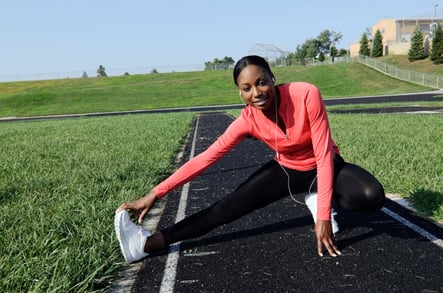By this point, everyone has  heard that exercise is good for health. The fitness industry has been growing significantly over the past decade. As of 2017, there were more than 200,000 health and fitness clubs worldwide, which is up from nearly 130,000 clubs in 2009. Clearly, fitness is becoming a huge part of peoples’ lives. But why are we seeing this massive growth in the industry, and in what ways is it improving health?
heard that exercise is good for health. The fitness industry has been growing significantly over the past decade. As of 2017, there were more than 200,000 health and fitness clubs worldwide, which is up from nearly 130,000 clubs in 2009. Clearly, fitness is becoming a huge part of peoples’ lives. But why are we seeing this massive growth in the industry, and in what ways is it improving health?
The Physical Benefits
The physical benefits of increased activity include the following.
![GettyImages-627455550-[Converted]-new](https://www.nifs.org/hs-fs/hubfs/GettyImages-627455550-%5BConverted%5D-new.jpg?width=402&name=GettyImages-627455550-%5BConverted%5D-new.jpg)
Increased Muscle Mass
A well-known benefit to working out is increased muscle mass. This alone has so many benefits to your health besides the visual appeal that people seek. Muscle is a huge driver for metabolism. In fact, it takes so much energy to maintain muscle mass that having more of it increases metabolism significantly, even at rest.
Improved Bone Health
Most people hit peak bone mass in early adulthood. After we hit our peak, our bone density begins to decline. Several factors go into how much we build before we hit our peak and how fast we fall once over that peak. And of course, exercise is a huge factor in this. Weight-bearing activity that forces you to challenge gravity is huge in preserving or even building bone density by breaking down the bone so it can build back even stronger.
Better Sleep
Exercise can improve sleep quality by expelling built-up energy. Another way sleep improves is the cycle of body temperature brought on by exercise. During activity the temperature increases; once activity has stopped the temperature gradually decreases, causing chemicals to be released that promote drowsiness.
Increased Energy and Stamina
In the short term, exercise increases blood flow throughout the body to improve energy. Over time, exercise causes improvements in cardiovascular health, allowing the heart to pump more oxygen-rich blood throughout the body, therefore increasing energy.
Reduced Cholesterol
When exercise, weight loss, and dietary intervention are combined, the LDL (bad) cholesterol levels decrease while HDL (good) cholesterol levels increase.
Decreased Risk of Chronic Diseases
If you’ve ever heard the phrase “exercise is medicine,” it will be no surprise that exercise actually reduces the risk of chronic diseases. Various things happen in the body to cause this, but the most important is that by getting active, the chances of developing Type 2 Diabetes, some cancers, stroke, heart disease, and more are drastically reduced.
Increased Coordination and Balance
By staying active, people learn how to be more coordinated and balanced. Motor control over movements becomes more natural the more it is practiced, and will translate to real-life scenarios. In the long run, especially through aging, this is beneficial to help prevent falls and the negative consequences, such as fractured bones, that come along with them.
The Mental Benefits
The mental benefits of increased activity include the following.
- Stress relief
- Positive mood
- Improved mental alertness
- Reduced anxiety and depression
- Improved self-esteem
- Increased cognitive function
Most of these improvements occur due to the increased blood flow to the brain, which acts on the hypothalamic-pituitary-adrenal (HPA) axis. This area of the brain interacts with several other regions, including the limbic system, hippocampus, and amygdala, which are correlated with motivation, mood, and responses to stress. Other noted improvements may be explained by providing distraction, improving self-efficacy, and increasing social interaction. Research shows that exercise can improve cognitive function by promoting neuroplasticity. By staying active throughout adulthood and senior years, cognitive decline can be prevented.
Although many mechanisms go into this complicated process, one thing that is known is that the rate of neurogenesis, or the production of new neurons, is greatly increased by exercise. This may be the result of increased blood flow to the brain during exercise, with an abundance of oxygen and nutrients.
Other Benefits
A lot of benefits that come from exercise can be measured or researched. Some benefits are harder to measure but still occur. We learn how to set realistic yet challenging goals, learn the discipline needed to accomplish those goals, and learn more about ourselves. We can gain a better understanding of how much we can push ourselves and improve our mind-body connection.
How Much Should You Work Out?
The current Physical Activity Guidelines for Americans outlines the recommended amount of activity for different age groups. Adults should do at least 150 to 300 minutes of moderate-intensity aerobic exercise, or 75 to 150 minutes of vigorous aerobic exercise a week. Most health benefits can start to be seen at the minimum amount; however more benefits are seen beyond 300 minutes of activity a week. Adults should also do some type of resistance-training exercise at least two days of the week.
At NIFS, we have multiple group fitness classes every day to help you reach your goals and hit the minimum requirements. Check out the group fitness schedule for 30–60-minute classes to help you achieve at least 150 minutes of exercise a week.

This blog was written by Hannah Peters, BS, CPT, Health Fitness Instructor. To learn more about the NIFS bloggers, click here.
 The first quarter of the year is behind us, and for many, those New Year's resolutions may feel like a distant memory. Maybe you started strong in January, only to have motivation wane as life got busy. Or perhaps you never quite found the time to commit to your health goals. The good news? Spring is the perfect opportunity to refresh your mindset, refocus your goals, and build sustainable habits that carry you through the rest of the year.
The first quarter of the year is behind us, and for many, those New Year's resolutions may feel like a distant memory. Maybe you started strong in January, only to have motivation wane as life got busy. Or perhaps you never quite found the time to commit to your health goals. The good news? Spring is the perfect opportunity to refresh your mindset, refocus your goals, and build sustainable habits that carry you through the rest of the year.
 heard that exercise is good for health. The fitness industry has been growing significantly over the past decade. As of 2017, there were
heard that exercise is good for health. The fitness industry has been growing significantly over the past decade. As of 2017, there were ![GettyImages-627455550-[Converted]-new](https://www.nifs.org/hs-fs/hubfs/GettyImages-627455550-%5BConverted%5D-new.jpg?width=402&name=GettyImages-627455550-%5BConverted%5D-new.jpg)

 With busy class schedules, homework, exams to study for and papers to write, not to mention wanting to have something of a social life, trying to stay fit in college can really be a challenge. On top of this, many students hold some form of a job where they work between 10 and 25 hours on any given week. Whether you are an undergrad or graduate student, the same thing applies. When all this stuff is on your plate and the schedule continues to fill up, one of the first things that tends to get pushed to the side is getting to the gym!
With busy class schedules, homework, exams to study for and papers to write, not to mention wanting to have something of a social life, trying to stay fit in college can really be a challenge. On top of this, many students hold some form of a job where they work between 10 and 25 hours on any given week. Whether you are an undergrad or graduate student, the same thing applies. When all this stuff is on your plate and the schedule continues to fill up, one of the first things that tends to get pushed to the side is getting to the gym!